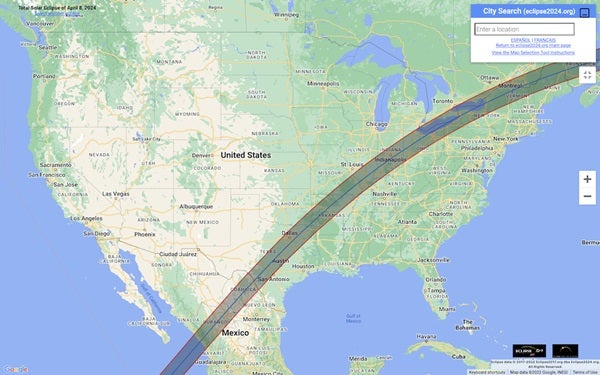Experience the appearance of totality during the solar eclipse

The solar eclipse that occurred on Aug. 21, 2017, brought to light the need for more astronomy education for the general public in the United States. With the last solar totality visible in the lower 48 states being in 1979, many people were eager to learn more about where to witness totality, how eclipses work, and how to safely observe them. The astronomy community rose to the challenge and provided extensive information on these topics.
Dan McGlaun, a seasoned veteran of 14 total solar eclipses, played a significant role in this educational effort. He operated the website www.eclipse2017.org, which garnered over 200 million hits and successfully educated the public about the 2017 total eclipse. For the upcoming 2023 and 2024 eclipses, McGlaun launched www.eclipse2024.org to serve as a hub for eclipse information.
One of the key features of McGlaun’s efforts is the Eclipse Simulator, an online tool that provides an accurate preview of the 2024 total solar eclipse from any location in North America. The simulator allows users to determine the best viewing location, simulate the eclipse and its duration, and learn more about the phenomena observed during totality.
Unlike other simulators, McGlaun’s Eclipse Simulator offers full-sky views, customizable foregrounds, an overview shadow map, and accurate sky darkening. Users can zoom in to see detailed features like Baily’s beads, prominences, the chromosphere, the diamond ring, and sample coronas. The tool also includes time sliders and a clock feature to run the eclipse in real, compressed, or accelerated time.
McGlaun meticulously calculated all eclipse data using methods from renowned experts in the field. He also developed features to show edge effects such as diamond rings, Baily’s beads, the corona, and the chromosphere, enhancing the simulator’s realism.
Following the success of the 2017 eclipse, McGlaun expanded the simulator to include over 140,000 cities, each with its own detailed rendering of the eclipse event. He added features like umbral darkening, variable coronas, statistically placed prominences, and the option to show the eclipse at any time. The simulator now supports various foregrounds, glare effects, and an eye safety warning that adjusts during totality.
The Eclipse Simulator is now a prominent tool on www.eclipse2024.org, where McGlaun continues to enhance it with new features and translations into multiple languages. Additionally, he has created over 10,000 YouTube videos showcasing eclipses from different locations, offering viewers a virtual experience of these celestial events.
As of now, the simulator covers upcoming eclipses like the April 20, 2023, hybrid solar eclipse and the Oct. 14, 2023, annular eclipse, leading up to the highly anticipated April 8, 2024, total solar eclipse in the U.S. Future developments may include adding weather effects, crowd noise, and even the option to control a fan to simulate the temperature drop during totality.
McGlaun believes that the Eclipse Simulator is one of the best tools available for showcasing eclipses to a wide audience. It’s a valuable resource for both novices and experienced eclipse chasers, offering a glimpse of what to expect during these rare celestial events. To explore the Eclipse Simulator for yourself, visit www.eclipse2024.org and witness the wonders of eclipses from your own location.





